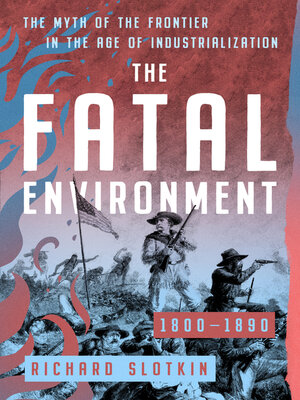The Fatal Environment
ebook ∣ The Myth of the Frontier in the Age of Industrialization, 1800–1890 · Mythology of the American West
By Richard Slotkin

Sign up to save your library
With an OverDrive account, you can save your favorite libraries for at-a-glance information about availability. Find out more about OverDrive accounts.
Find this title in Libby, the library reading app by OverDrive.



Search for a digital library with this title
Title found at these libraries:
| Library Name | Distance |
|---|---|
| Loading... |
A two-time National Book Award finalist’s “ambitious and provocative” look at Custer’s Last Stand, capitalism, and the rise of the cowboys-and-Indians legend (The New York Review of Books).
In The Fatal Environment, historian Richard Slotkin demonstrates how the myth of frontier expansion and subjugation of Native Americans helped justify the course of America’s rise to wealth and power. Using Custer’s Last Stand as a metaphor for what Americans feared might happen if the frontier should be closed and the “savage” element be permitted to dominate the “civilized,” Slotkin shows the emergence by 1890 of a mythos redefined to help Americans respond to the confusion and strife of industrialization and imperial expansion.
“A clearly written, challenging and provocative work that should prove enormously valuable to serious students of American history.” —The New York Times
“[An] arresting hypothesis.” —Henry Nash Smith, American Historical Review
In The Fatal Environment, historian Richard Slotkin demonstrates how the myth of frontier expansion and subjugation of Native Americans helped justify the course of America’s rise to wealth and power. Using Custer’s Last Stand as a metaphor for what Americans feared might happen if the frontier should be closed and the “savage” element be permitted to dominate the “civilized,” Slotkin shows the emergence by 1890 of a mythos redefined to help Americans respond to the confusion and strife of industrialization and imperial expansion.
“A clearly written, challenging and provocative work that should prove enormously valuable to serious students of American history.” —The New York Times
“[An] arresting hypothesis.” —Henry Nash Smith, American Historical Review







